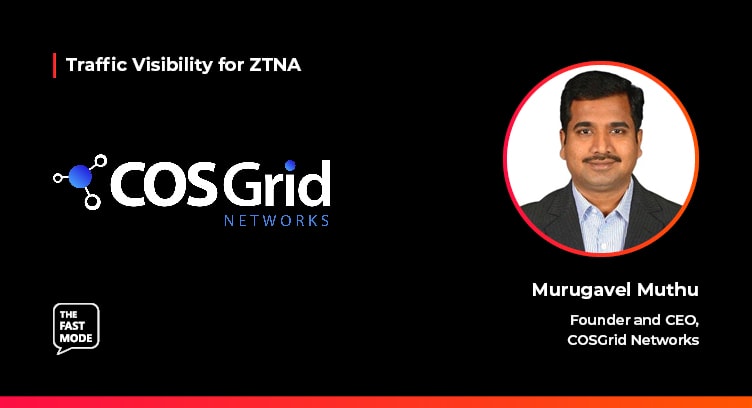The Fast Mode spoke to Murugavel Muthu, Founder and CEO of COSGrid Networks on the impact of traffic visibility on ZTNA networks. Murugavel joins us in a series of discussions with leading cybersecurity and networking vendors, assessing the evolution of ZTNA technologies, the roadmap for ZTNA deployments, the benefits of ZTNA for enterprise and telco networks, and the need for real-time traffic visibility technologies such as DPI for ZTNA.
Ariana: What do you consider are the core features (must-have) of ZTNA?
Murugavel: Zero Trust Network Access (ZTNA) is an IT security solution that provides secure least privileged access to an organization's data, resources/applications, and services based on the defined access control policies of Who, What, When, Why, and How with visibility. ZTNA is all about Micro Segmented remote access which narrows down the attack surface and thus improves the organization's cybersecurity posture. The core features of ZTNA include:
- Extended Identity for Endpoints and Role-based Access Control
- Device Trust
- Universal Protocol support
- Resources invisible on the Internet
- Protect both User and App traffic (North-South) as well App to App traffic (East-West)
- Defense in depth through multi-layered verification;
Ariana: What challenges do you see across ZTNA deployments?
Murugavel: ZTNA is easy to deploy considering it has a completely automated workflow and doesn’t depend on hardware appliances like VPN gateways. The challenges come in when the enterprises encounter various product architectures from different vendors. This means, there is some confusion in what are baseline requirements and what are augmented product features. Luckily, we have the NIST 800.207 framework that offers a clear direction, ZTNA requirements, and options for an organization to follow.
Ariana: Why is the cloud a key component of ZTNA?
Murugavel: Cloud makes the deployment of ZTNA so easy that deployment can be completed within 10 minutes. In today’s SaaS world, ZTNA offers an easy, flexible, and quick deployment possible by leveraging the cloud.
Ariana: What do you predict will be the way forward for ZTNA?
Murugavel: Considering the numerous attacks on Identity providers and subsequent high-profile data breaches in recent times, ZTNA will start playing a critical role in defending the digital infra and reducing risks. Hence, it’s time for organizations to understand their attack surfaces and ring fences' critical assets with Zero trust Network Access.
To learn more, visit:
Murugavel Muthu is a seasoned cybersecurity product leader with over 24 years of experience in developing and launching innovative global products in Networking Communications and Cybersecurity. He holds a patent in SD-WAN, and IPs in IoT Security and NDR. He is the Founder and CEO of COSGrid Networks, a company that is transforming the way Zero Trust and Superior Network Access are delivered and managed in cloud-centric and IoT-enabled enterprises.
This interview is a part of The Fast Mode's Next-Gen DPI Traffic Visibility for ZTNA segment, featuring over 40 leading cybersecurity and networking solution providers and their views on the importance of traffic visibility for ZTNA. A research report on this topic will be published in January 2024 - for more information, visit here.



















